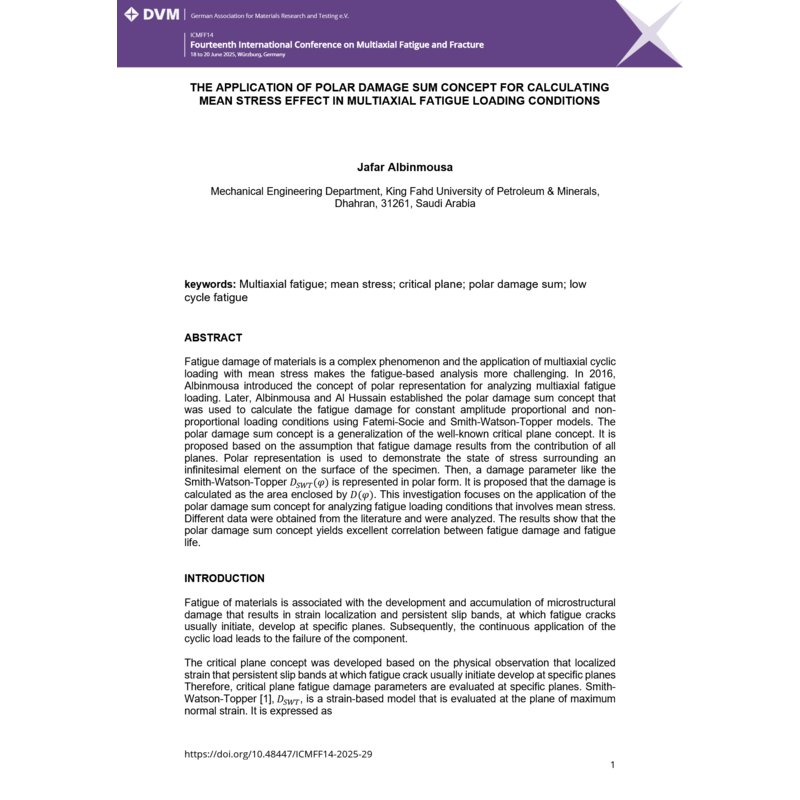- Nur online erhältlich



Fatigue damage of materials is a complex phenomenon and the application of multiaxial cyclic loading with mean stress makes the fatigue-based analysis is more challenging. In 2016, Albinmousa [1] introduced the concept of polar representation for analyzing multiaxial fatigue loading. Later, Albinmousa and Al Hussain [2] established the polar damage sum concept that was used to calculate the fatigue damage for constant amplitude proportional and non-proportional loading conditions using Fatemi-Socie and Smith-Watson-Topper models. The polar damage sum concept is a generalization of the well-known critical plane concept. The polar damage sum concept is proposed based on the assumption that the fatigue damage results from the contribution of all planes. Polar representation is used to…

Datenschutzbedingungen (bearbeiten im Modul "Kundenvorteile")

Lieferbedingungen (bearbeiten im Modul "Kundenvorteile")

Rücksendebedingungen (bearbeiten im Modul "Kundenvorteile")
Fatigue damage of materials is a complex phenomenon and the application of multiaxial cyclic loading with mean stress makes the fatigue-based analysis is more challenging. In 2016, Albinmousa [1] introduced the concept of polar representation for analyzing multiaxial fatigue loading. Later, Albinmousa and Al Hussain [2] established the polar damage sum concept that was used to calculate the fatigue damage for constant amplitude proportional and non-proportional loading conditions using Fatemi-Socie and Smith-Watson-Topper models. The polar damage sum concept is a generalization of the well-known critical plane concept. The polar damage sum concept is proposed based on the assumption that the fatigue damage results from the contribution of all planes. Polar representation is used to demonstrate the state of stress surrounding an infinitesimal element on the surface of the specimen. Then, a damage parameter like the Smith-Watson-Topper
DSWT = σn,maxΔεmax/2
is represented in the polar forms as
DSWT(φ) = σn,max(φ)Δεmax(φ)/2
It is proposed that the damage is calculated as the area enclosed by DSWT(φ). This investigation focuses on the application of the polar damage sum concept for analyzing fatigue loading conditions that involves mean stress. Different fatigue data were obtained from the literature. These include uniaxial fatigue experiment on SAE 1045 steel [3] and multiaxial fatigue experiments on fine grain structural steel S460N [4]. Using Smith-Watson-Topper parameter, a comparison between the correlations for fatigue damage and fatigue lives obtained from implementing the critical plane and polar damage sum concepts is shown in Fig.1. This figure shows that the polar damage sum concept yields excellent correlation between fatigue damage and fatigue life. Further analysis will be conducted to examine additional loading conditions and materials.